We had a snake rescue call while I was in the middle of ground-truthing the transect co-ordinates for the “All Animal Census 2011” in the Gudalur Forest Division. Given my passion for snakes, I dropped everything and went straight to the spot. Since it took me 15 mins to reach the site, the inevitable had happened, two small 1 foot long snakes had been killed, and burned as well.
I looked around and found the burned remains, and from what little was left I identified them as Striped Keelbacks (Amphiesma stolatum). They had killed two, but one had been saved by a friend and fellow wildlife enthusiast. Of all the snakes I’ve handled, the Striped Keelback is one of the most gentle snake I’ve come across, non-venomous and very non-aggressive.
While I’ve got used to snakes being killed before I get there, what gets me the most about this incident was the whole incident happened right in front of the gate where the Assistant Conservator of Forests (ACF) stayed, while he was at home. The protector of our forests and wildlife never initiated any action or tried to stop the youth who killed the poor creatures. While it was clear that he did not have any passion or even a mild interest in in wildlife, the least he could be expected to do is uphold the law when its being broken under his nose. He didn’t in any way attempt to dissuade the youth from killing the snakes.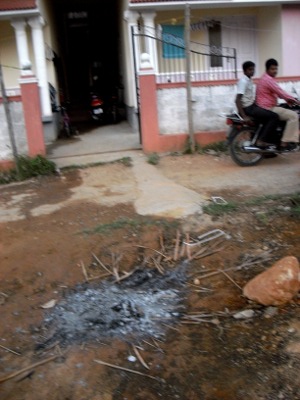
When ordinary folk like us go out of our way to protect snakes and wildlife, people who are paid fat salaries to protect and conserve wildlife do nothing at all. Such complete lack of motivation or even ability to implement the basic laws by the very people entrusted to protect our forests is completely unacceptable!
I did report the incident to the DFO and he in turn warned him about such behaviour. Lets hope to see some change in at least this one person’s attitude, but how are we going to deal with the other such people in the forest department?
Rest In Peace my reptile friends.
Madhusudanan H.
Learn MoreIt was a Sunday afternoon, around 2:00pm when I got the call from my colleagues. I was all set to watch the cricket match between India and England which was being played in Bangalore. It was the world cup after all. All I remember is the person on the other side of the phone saying ‘leopard rescue’. The next thing I knew, three of my colleagues from The Shola Trust and me were driving (flying if you ask me!) to Bithercad where the leopard was said to have been trapped in someone’s house.
The narrow lane leading upto the victim’s house was filled with people. Some of them excited about the visitor from the wild. But the majority were excited about the attention their small village was getting (from officers from the forest department, journalists and reporters from TV channels). As we were nearing the epi-centre of the incident, the crowd only got bigger and bigger. Men from the forest department were already there and were doing their best to get the situation under control. The leopard was trapped inside a small room, used as a storage space for agricultural tools. All the doors and windows of the room were shut tightly and held shut by 4 or 5 men from the village.
Field Director of Mudumalai, Dr. Srivastava and Deputy Director, Mr. Ameer Haja arrived with the vet, Dr. Kalaivanan. It was great to see the enthusiasm of the forest department, from the FD down to the guards, really wanting to save the leopard. But enthusiasm alone was not enough!

For the next four hours the leopard was stuck inside the dark room that was surrounded by hundreds of people smoking beedis and playing loud music on their phones! No wonder it took 6 darts to knock out the scared and anxious animal. The local politicians were quick to make the most of the situation. They wanted compensation. Compensation not only for the injured woman, but also for cattle missing since 1997 followed by a string of other incidnets since. People were demanding why the leopard’s life was more valuable than theirs and the mob was beginning to get unruly and violent when preparations were being made to move the cat out of the house. It also didn’t help that the guards (who were already understaffed) were sent on last minute errands to fetch ropes, sticks and other knick-knacks needed for the second part of the operation. When finally, the animal was being moved out of the house, people started throwing themselves at the rescue jeep and refused to give way. Moving inch by inch, the vehicle finally broke away from the mad crowd. The tranquilised leopard was then taken to Ettimoola to be treated before being released back into the wild.
When we reached Ettimoola (after stopping by Gudalur to buy a few extra antibiotics to treat the leopard), the leopard was lying on the ground, still knocked out. It was severely injured. Its entire hind portion was filled with puncture marks and wounds, possibly from a fight with a tiger or another leopard. The vet’s main medicine kit arrived about 45 mins later, since his assistant wasn’t able to get into the right vehicle and got stuck behind. Time was of vital essence as the there was just limited time before the tranquilizers would wear off and the leopard regained consciousness.
Assessing the wounds, the vet knew he had a mammoth task at hand, and very little time. The vet worked on the leopard for about an hour, in which time it started regaining consciousness! Though he didn’t give it high chances of surviving everyone was hoping for the best.
When it was ready to be transported to Chikhalla (the northern part of Mudumalai) to be released, more time was wasted in figuring out the transport for the animal. The animal was caught in Gudalur Division, but the whole operation was being conducted by the Mudumalai Tiger Reserve, where it was going to be released. Who was going to pay for the whole things was the main concern! After some confusion about this, the pickup truck finally arrived, just in time!
Despite my fervent hopes and prayers, the leopard didn’t make it. It died during the early hours of the morning. They said it wouldn’t have made it in the wild or captivity anyway.
It was a great experience, but I can’t help but feel the prince should have been treated much better!
Nishita Vasanth
Learn MoreAfter the enthusiasm shown by the students of the Bharathiar College, we decided to have another session with them. On the 20th of February, we organised a visit to Mudumalai. The agenda was very similar – do something useful while at Mudumalai, interact with some of the officials present, and also have some fun at the end of the day!
The key part of this trip was to get the kids to interact with tourists and raise levels of awareness about the landscape, the need to conserve nature and act responsibly.
We started around 11 from Gudalur in the forest department van, and had a much bigger crowd than the previous time – about 25 students. Oh the way to Thepakadu we were quite lucky and watched an elephant close to the road reaching up and breaking branches off a tree!
On reaching, we we had a quick briefing and then put on our badges and gloves and started picking plastic.
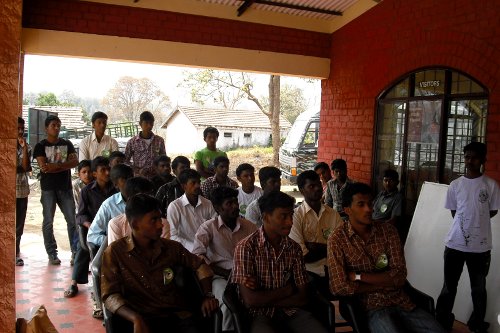
We focused on interacting with tourists and educating them. We found a van full of young people form Kerala, and convinced of all them join in the plastic picking as well!
We cleared up the parking lot area and collected over 10 sacks of plastic and waste. The visual impact of this huge pile of rubbish helped us, as could show this to the tourists we spoke to! Most people were willing to listen to us, and agreed with us in theory. We hope some of them might actually use less plastic or at least think twice about it!
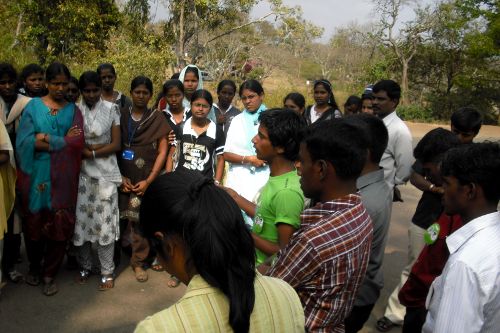
The whole gang then went down to the river to wash and freshen up for lunch. After a somewhat leisurely lunch, everyone sat around and chatted for a bit about their college and various conservation related issues.
At about 3 pm everyone moved towards the elephant camp and spent an hour or so again interacting with tourists.
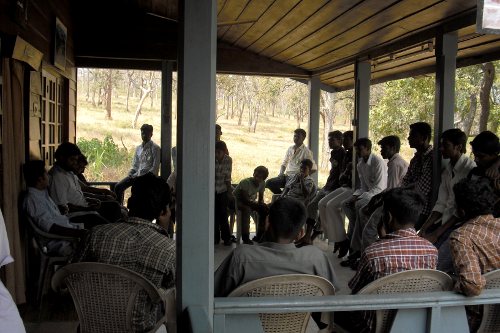
After that, at about 4 pm, Dr. Kalaivanan, the forest department veterinarian joined us, and talked about the problems caused by plastics in forest areas. We were lucky to get so much of his time and had a long interactive session where we asked him all sorts of questions about a range of things related to animals. Dr. Kalaivanan was as dedicated and enthusiastic as ever – thank you so much for inspiring us!
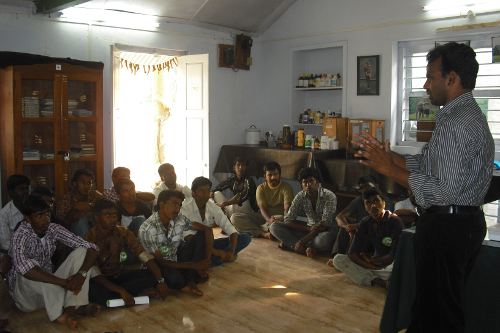
Towards dusk the forest department van came around, and took all of us for a trip into the forest, and finally dropped everyone off at Gudalur at about 7.00 pm.
Another day well spent!
Learn More